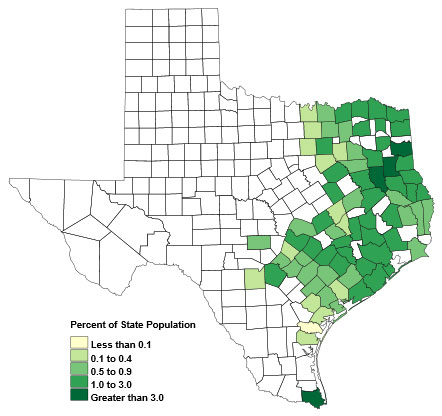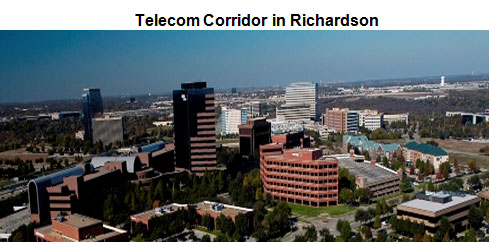
Source: Popgrowth, University of Texas at San Antonio
Click on the above image to access the interactive map. Take a look at the map. What is changing on the map each year? Are there trends that occur? How can they predict information for the years 2020 through 2040?

According to the Dallas Federal Reserve, one in six people living in Texas today are an immigrant. Immigrants constitute 16.4 percent of the population in Texas. The increase in immigration and migration has contributed to the population growth in Texas in the 21st century. Immigrants and migrants alike choose to come to Texas because wages are higher than many other states and the cost of living is relatively lower.
Career opportunities in computer technology, engineering, and the medical field attracted people from across the country and across the globe to major cities in Texas in the early 2000s.

Source: Dell RR1, Eustress, Wikimedia
The Austin area attracted those in the high-tech industry. By 2000, the immigrant population in Austin had increased from 49,000 to 149,000.

Source: TelecomCorr1, Telecom Corridor
The telecom industry in the Dallas Metroplex area expanded rapidly in the early 21st century. By 2000, the immigrant population increased to nearly 780,000 in the Dallas area.

Source: Aerial of Texas Medical Center with downtown Houston in the background, Hequals2henry, Wikimedia
Doctors, nurses, and other healthcare professionals moved to Houston to take advantage of the available careers in the healthcare industry. Houston has also been a popular destination for those in the energy industry. As a result, Houston has become one of the most diverse cities in Texas.
The cities of Austin, Dallas/Fort Worth, and Houston are the top three choices in Texas that people are moving to from other states.
Why do you think these cities are popular choices for people migrating to Texas?

At the beginning of this section, you saw a map that illustrated the projected population growth in Texas for the years 2020 to 2040. The population of Texas is expected to grow rapidly in the next few decades. The Texas State Data Center predicts the population of Texas to reach more than 25 million people.
Predicting the future population of Texas is important because it allows both the state and local governments to plan accordingly.
An increase in population means that there will be an increase in the number of school-aged children. In effect, there will be a need for more schools, as well as more teachers, principals, and other personnel. |
As the population increases, there will be an increase in the need for various modes of transportation and suitable infrastructure. People will need access to public transportation, mass transit, and highway systems that can handle the increase. |
As the population increases, the need for health services will also increase. People will need to see the doctor or go to the hospital. Doctors, nurses, and other healthcare providers will be in demand. |
 |
 Source: METRO Light Rail3, Wikimedia |
 |
In this lesson, you learned how immigration and migration changed during the 19th, 20th, and 21st centuries. You also learned how these changes impacted the population of Texas. Learning about immigration and migration to Texas can help leaders plan for the future of the state.